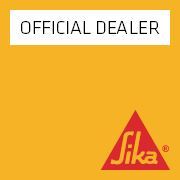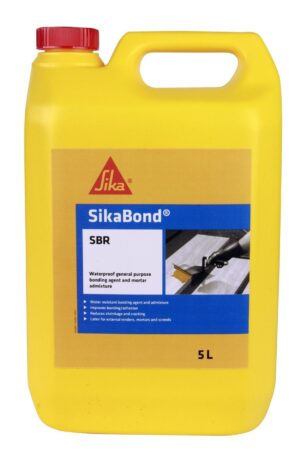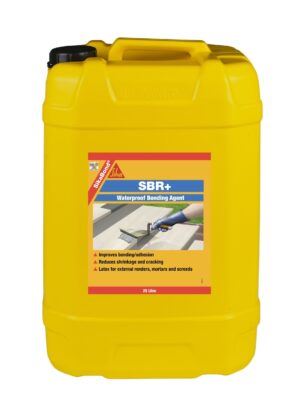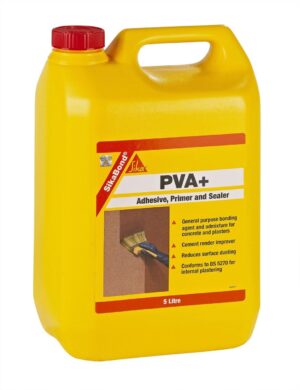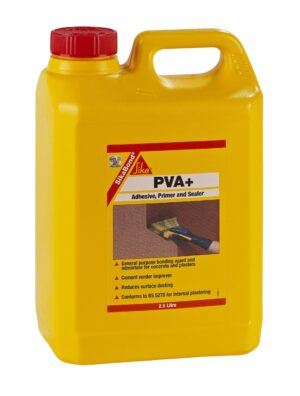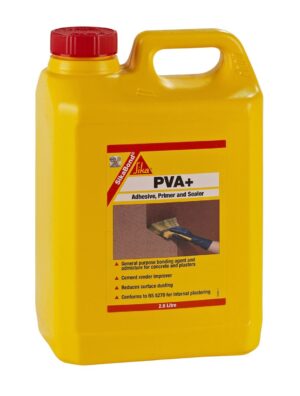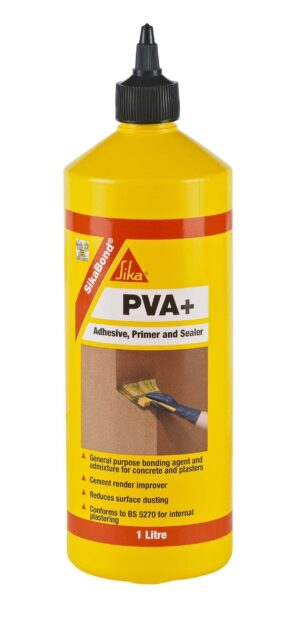What is PVA glue?
PVA, short for Polyvinyl Acetate, is also commonly referred to as PVA glue, white glue, wood glue, carpenter glue and sometimes even school glue. It has a number of properties varying from a wood glue for DIY enthusiasts and joiners, to sealing timber and plastic, as well as waterproofing plaster, render and mortar. Put simply, in its most sophisticated form, PVA is an extremely versatile, waterproof sealer and adhesive, with a range of uses in the construction industry.
What’s the difference between PVA and Elmer’s glue?
The short answer is, not much – in fact, the two names are often used interchangeably. Elmer’s glue is commonly used for crafty projects by DIY enthusiasts, the exception being artists who are using the glue to create works they plan to sell and need to last decades. The reason for this is that one of the disadvantages of Elmer’s glue compared to PVA is the former tends to yellow and break down over time, while PVA is guaranteed to keep materials intact.
What are the benefits of PVA?
As discussed, one of the primary benefits of PVA over other glue alternatives is that it does not break down or yellow over time, and it remains flexible. PVA also dries clear, without emitting harmful or unpleasant fumes, and does not affect the PH balance of the material it comes into contact with. What’s more, it’s not toxic unless ingested, and can be safely handled with bare hands.
PVA can be used on composite woods such as chipboard, plywood and MDF as well as pure woods, and can serve as a high-performance bonding agent, primer, sealer and dust proofer. PVA glue is also water soluble, meaning less gloopy glue can be created by adding water to the thicker one and stirring it in.
What is PVA used for?
PVA glue is particularly useful for gluing porous materials such as paper, cloth and wood; it can also act as a consolidant for porous building materials such as sandstone. It’s commonly applied before applying a finish on absorbent surfaces, as the finish dries too quickly if applied directly. Unlike many polymers, PVA adhesive is not acidic, and it delivers a very strong bond, while also being flexible. It can also be used as a filler if sawdust is added to it.
PVA glue is most often used as a wood adhesive (carpenter’s PVA is actually yellow-coloured), wallpaper glue, drywall primer, fabric and leather adhesive, as well as paper adhesive as part of a packaging process. PVA is also very popular as a method of bookbinding, as it’s flexible and binds books securely without compromising the structure of the pages.
What types of PVA glue are there?
- PVA (Polyvinyl Acetate) is used in paints, as a sealer and for book binding – it’s white in colour and dries clear, after which it remains flexible and permanent over time.
- PVA Wood Glue is used for wood-to-wood joining – it’s yellow in colour, and absorbs into the wood. This type of PVA glue absorbs most optimally when wood is clamped together until completely dry.
- Water Resistant PVA Glue can withstand all types of extreme weather, and is especially efficient in resisting moisture and mildew.
What’s the difference between PVA and SBR?
SBR, or Styrene Butadiene Rubber, is a water resistant bonding and sealing agent, and shares many similar characteristics with PVA. One key difference is that, whereas PVA remains water soluble after drying, once dry SBR is not. Consequently, the SBR bonding agent is more suitable for situations where damp might be a factor, such as external finishes, shower areas and swimming pools, as well as in sand or cement screeds and renders.
Sika’s bonding agent line currently consists of:
SikaBond SBR+ Waterproof Bonding Agent
Available in both 25L or 5L variants, SikaBond SBR+ is a one component, water based, general purpose, styrene butadiene rubber emulsion. When diluted with water it produces a gauging solution for improving adhesion, workability and waterproofing of mortar and cementitious mixes. It is water resistant and can also be used as admixture or latex for external renders, mortar and screeds.

